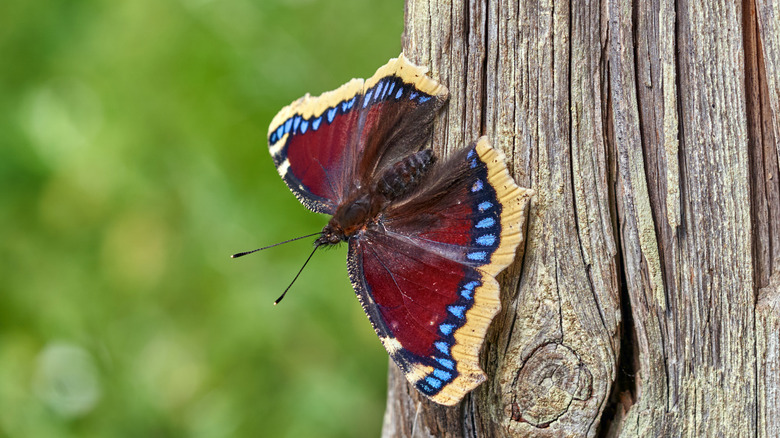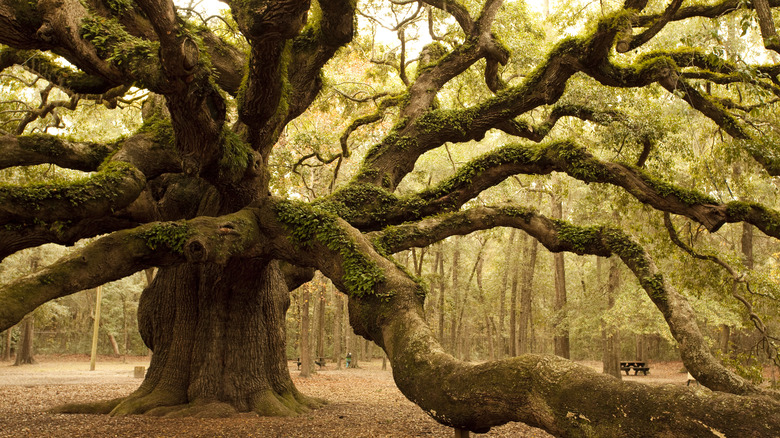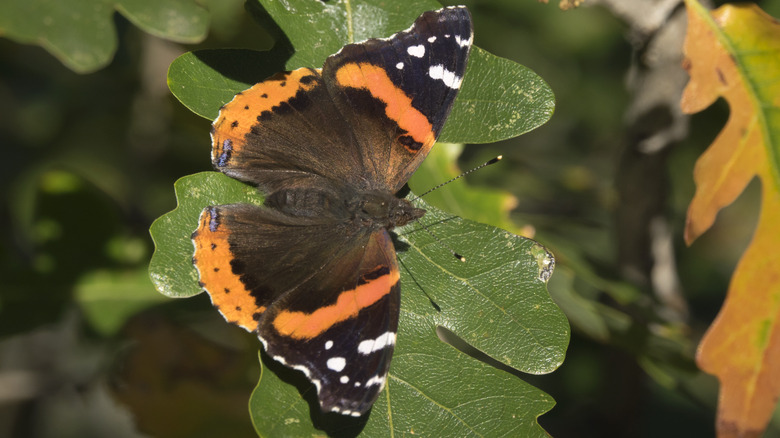The Common Tree That'll Attract All Kinds Of Beautiful Butterflies To Your Yard
When most people want to attract butterflies to their yard, they may want to plant flowers like milkweed. However, one type of plant is often overlooked when it comes to attracting butterflies — trees! These large, beautiful, and bountiful organisms are the backbones of ecosystems and food webs. In fact, the oak tree is one of the most important species to plant to support wildlife and the food chain as a whole. Oak trees are the real unsung heroes of the pollinator garden, supporting a mighty 2,300 species, including close to 900 types of butterflies and moths.
The mystical, ancient grandmother trees of the forest, oak trees are a true wonder to behold. They are only considered "old" at 700 years of age and these magnificent, larger-than-life trees are an entire ecosystem. To encourage more native pollinators and butterflies, consider planting a beautiful oak tree in your yard. While flowers are essential nectar sources, there are other ways to support pollinators. Oak trees are essentially nurseries for all sorts of different forms of life and play a vital role in the health of the ecosystem as a whole, from the micro to the macro. If your goal is to attract butterflies to your garden, consider a keystone species like oak and build around it with other native flowering plants.
The importance of oak trees for sustaining life
Oaks are ecological superstars. They support more life than any other studied plant species, thus making them a keystone species. Since they are such an ancient and long-lived organism, everything from bacteria, fungi, and microorganisms to insects, birds, mammals, and even amphibians all depend on oak trees in one way or another. According to entomologist Dr. Doug Tallamy, oak trees are the most productive tree species in 84% of counties in the United States. Without oak trees, many species wouldn't have the habitats or food that they need to survive.
Chickadees, for example, need to feed their young between 6,000 and 9,000 caterpillars over a 16-day period or before fledgling. Furthermore, due to the sheer number of caterpillars on an oak tree at any given time, it is the most common nesting tree for chickadees and countless other bird species. As for our favorite fluttering pollinators, oak trees are the host plant for the mourning cloak, Horace's duskywing, and five different species of hairstreak butterflies.
How to plant an oak tree to attract butterflies
Oak trees aren't just ecologically important; they offer a unique beauty to the home landscape that cannot be over-emphasized. These earthly giants are a powerhouse in preserving and maintaining biodiversity and are arguably one of the most gorgeous trees out there. With a naturally large canopy, oak trees are a shade tree option for your yard that will truly keep on giving. This colossal beauty can add enormous value to your home in every sense. A bonus is that growing and caring for oak trees is relatively easy and low maintenance. It's a resilient native species once established.
When deciding on what type of oak to plant in your yard, first determine which are native to your specific ecoregion, and then figure out what the light, space, and soil requirements are and how that lines up with the spot you have picked out. Keep in mind oaks are slow growers, so don't expect a colossal southern live oak in a matter of years. The best time to plant a tree was 20 years ago, and the second best time is today. To attract butterflies and other pollinators, plant your oak tree in a sunny spot and then place perennial native flowering plants around it. Soon enough, you'll be effortlessly drawing butterflies to your yard and supporting biodiversity and the ecosystem as a whole!


